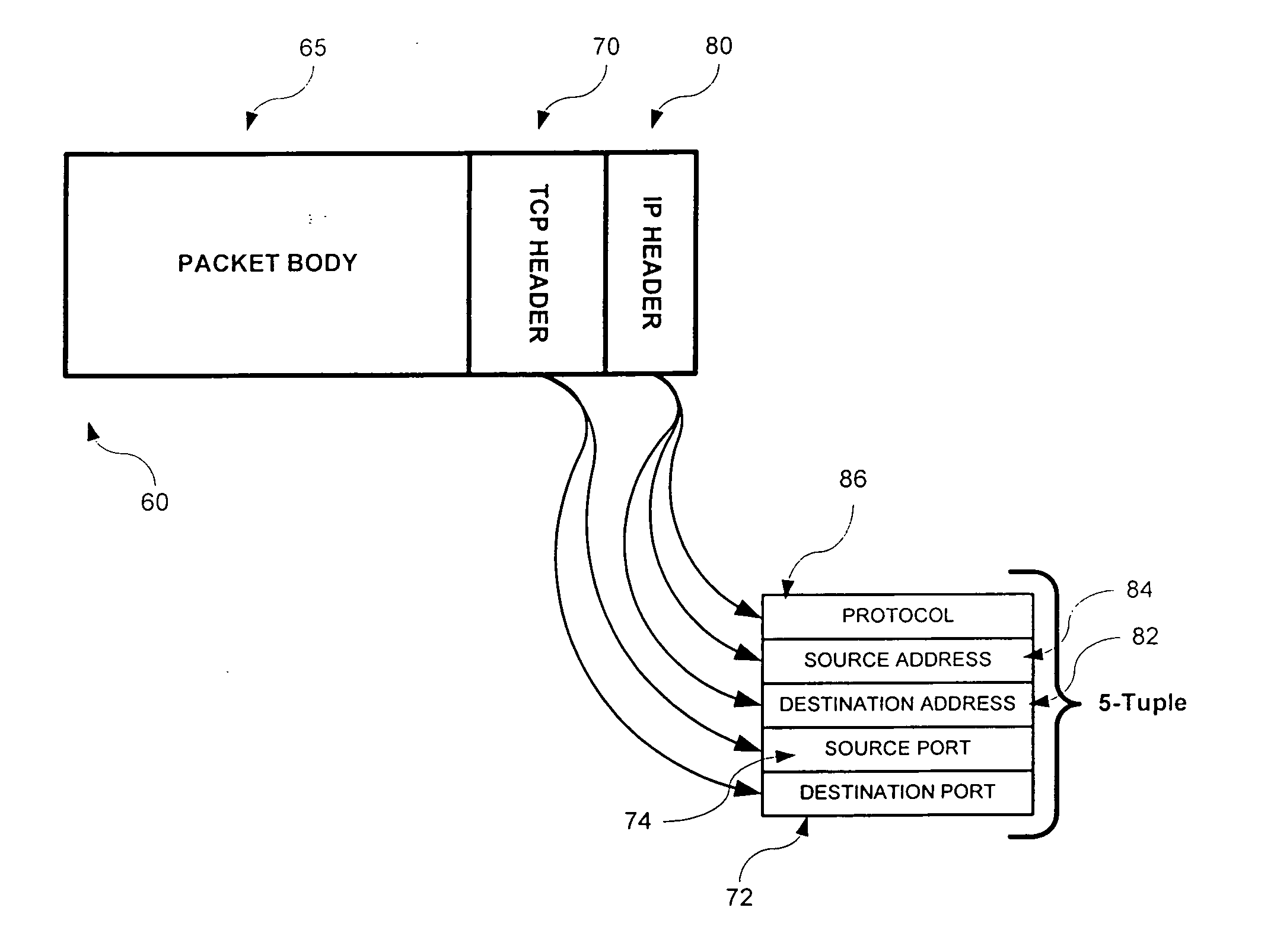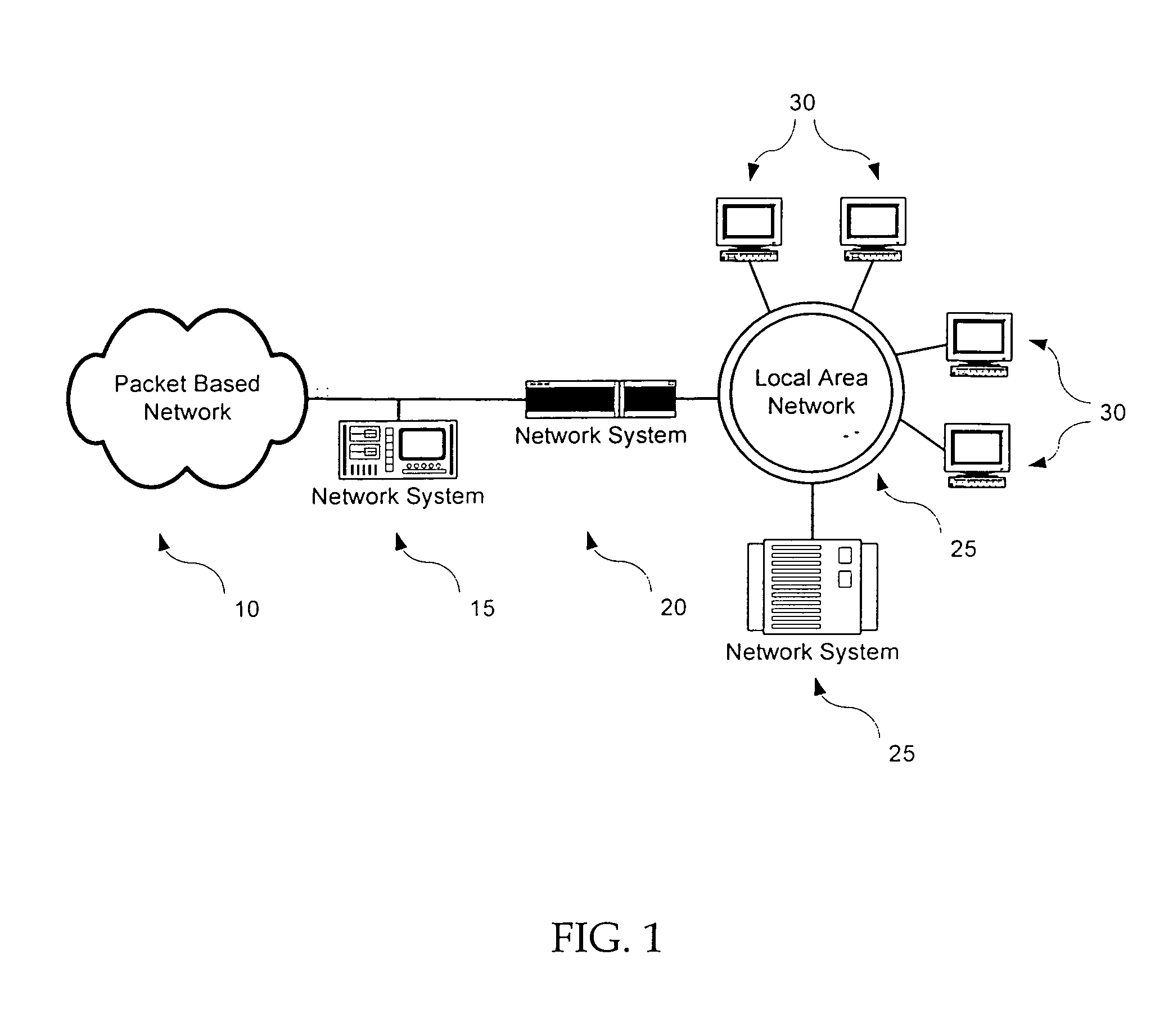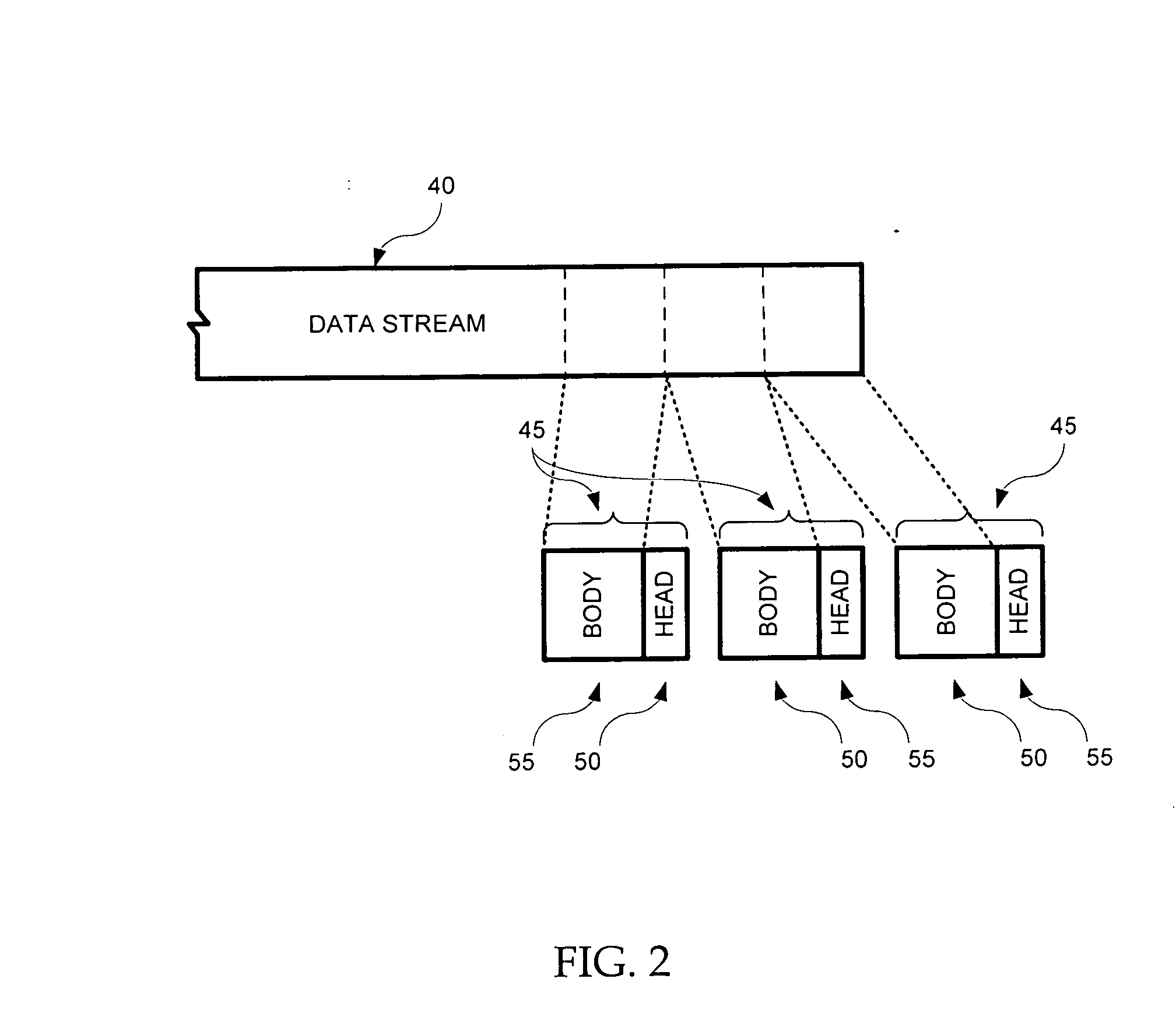Statistical classification of high-speed network data through content inspection
a technology of content inspection and network data, applied in the field of network communication systems, can solve problems such as increasing the delay incurred, limiting throughput, and and achieve the effect of reducing the difficulty of examining the payload in a relatively small window of tim
- Summary
- Abstract
- Description
- Claims
- Application Information
AI Technical Summary
Benefits of technology
Problems solved by technology
Method used
Image
Examples
Embodiment Construction
In accordance with one embodiment of the present invention, network data are statistically classified at wire-speed by examining, in part, the payloads of packets in which such data are disposed and without having a priori knowledge of the classification of the data It is understood that the wire-speed refers to the speed (i.e., rate) at which packets are received from the network, for example, greater than or equal to 100 Mbits / sec. It is also understood that a packet includes, for example, cells, frames, blocks, etc. It is further understood that network data includes, for example, streams, files, and messages, etc.
FIG. 3 shows various blocks of a wire-speed network data classifier 100, in accordance with one embodiment of the present invention, that is configured to classify the packets it receives from packet based network 10. Wire-speed network data classifier 100 includes, in part, a network interface 110, a feature extractor 120, a statistical classifier 230, and a policy e...
PUM
 Login to View More
Login to View More Abstract
Description
Claims
Application Information
 Login to View More
Login to View More - R&D
- Intellectual Property
- Life Sciences
- Materials
- Tech Scout
- Unparalleled Data Quality
- Higher Quality Content
- 60% Fewer Hallucinations
Browse by: Latest US Patents, China's latest patents, Technical Efficacy Thesaurus, Application Domain, Technology Topic, Popular Technical Reports.
© 2025 PatSnap. All rights reserved.Legal|Privacy policy|Modern Slavery Act Transparency Statement|Sitemap|About US| Contact US: help@patsnap.com



